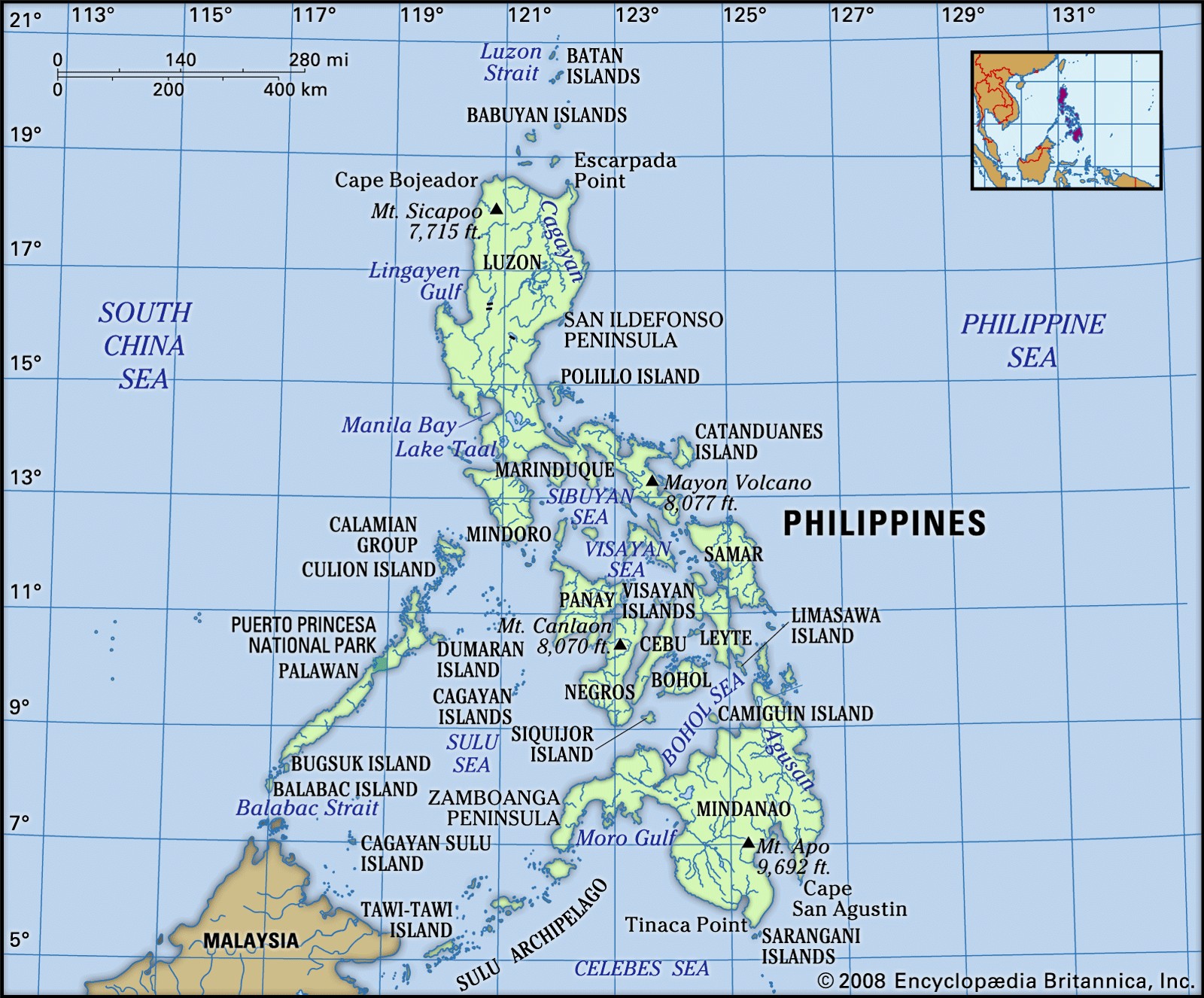The Philippines, an archipelago of over 7,000 islands, boasts a unique geography. But just how vast is this nation compared to others? This article delves into the size and scale of the Philippines, providing a geographical overview and comparing its land area to other countries.
Geographic Overview of the Philippines
The Philippine archipelago stretches approximately 1,150 miles (1,850 km) from north to south and about 700 miles (1,130 km) at its widest point east to west. It’s bordered by the Philippine Sea to the east, the Celebes Sea to the south, the Sulu Sea to the southwest, and the South China Sea to the west and north. Taiwan lies to the north, Borneo to the south, and Indonesia to the south and southeast.
 Philippines
Philippines
The main island groups are Luzon in the north (including Mindoro and Palawan), the Visayas in the center (Cebu, Bohol, Negros, Panay, Leyte, Samar, and Masbate), and Mindanao in the south. While over 7,000 islands comprise the Philippines, only around 350 have areas larger than one square mile.
Land Area Comparison: Philippines vs. Other Nations
The total land area of the Philippines is approximately 115,831 square miles (300,000 square kilometers). To put this into perspective, let’s compare it to other countries:
- Smaller than: The Philippines is smaller than countries like Japan, Spain, Italy, and Germany. It’s also significantly smaller than larger nations like the United States, China, Canada, and Russia.
- Larger than: The Philippines is larger than countries such as the United Kingdom, South Korea, Vietnam, and Ecuador. It’s considerably larger than island nations like New Zealand and Cuba.
The Significance of Size and Geography
The size and fragmented nature of the Philippine archipelago significantly influence its biodiversity, culture, and economy. The varied landscapes, ranging from mountainous regions to coastal plains, contribute to a rich array of ecosystems and agricultural opportunities. The country’s vast coastline supports fishing and maritime industries. However, the dispersed geography also presents challenges for infrastructure development and national unity.
Conclusion
While not among the world’s largest countries, the Philippines possesses a substantial land area, especially considering its archipelagic nature. Its size and unique geography play a crucial role in shaping the nation’s identity and future. The comparison to other countries highlights the Philippines’ position on the global scale, emphasizing both its significant landmass and the challenges and opportunities presented by its fragmented geography.